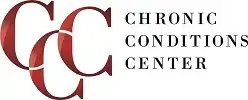Quick Recovery from Lower Back Pain
Quick Recovery from Lower Back Pain
At Chronic Conditions Center in Bethel Park, PA, we understand how lower back pain quick recovery matters to our patients. Lower back pain affects millions of people every day. Therefore, getting relief quickly is essential to returning to normal life.
Common Symptoms and Related Problems
Lower back pain causes stiffness, aching, and sharp pains in your lower spine. Additionally, many people experience muscle spasms that make moving difficult. Furthermore, lower back problems often lead to hip pain because your body tries to protect the injured area. Similarly, knee pain develops when you change how you walk to avoid back discomfort.
How Daily Life Gets Affected
Lower back pain disrupts your everyday activities in many ways. First, getting a good night’s sleep becomes nearly impossible when you can’t find a comfortable position. Next, working at a desk or standing for long periods causes increased pain. Moreover, exercising feels out of the question when your back hurts. Consequently, simple tasks like bending down or lifting groceries become challenging.
Our Treatment Options for Fast Recovery
At Chronic Conditions Center, we offer several therapies that help with lower back pain and quick recovery. Initially, our chiropractor performs gentle adjustments to realign your spine. Then, we use soft tissue therapies to release tight muscles and reduce inflammation. Finally, spinal decompression therapy stretches your spine gently, which relieves pressure on nerves.
These treatments work together to speed up your healing process. As a result, most patients notice improvement within just a few visits. Don’t let back pain control your life anymore—contact us today for relief.

